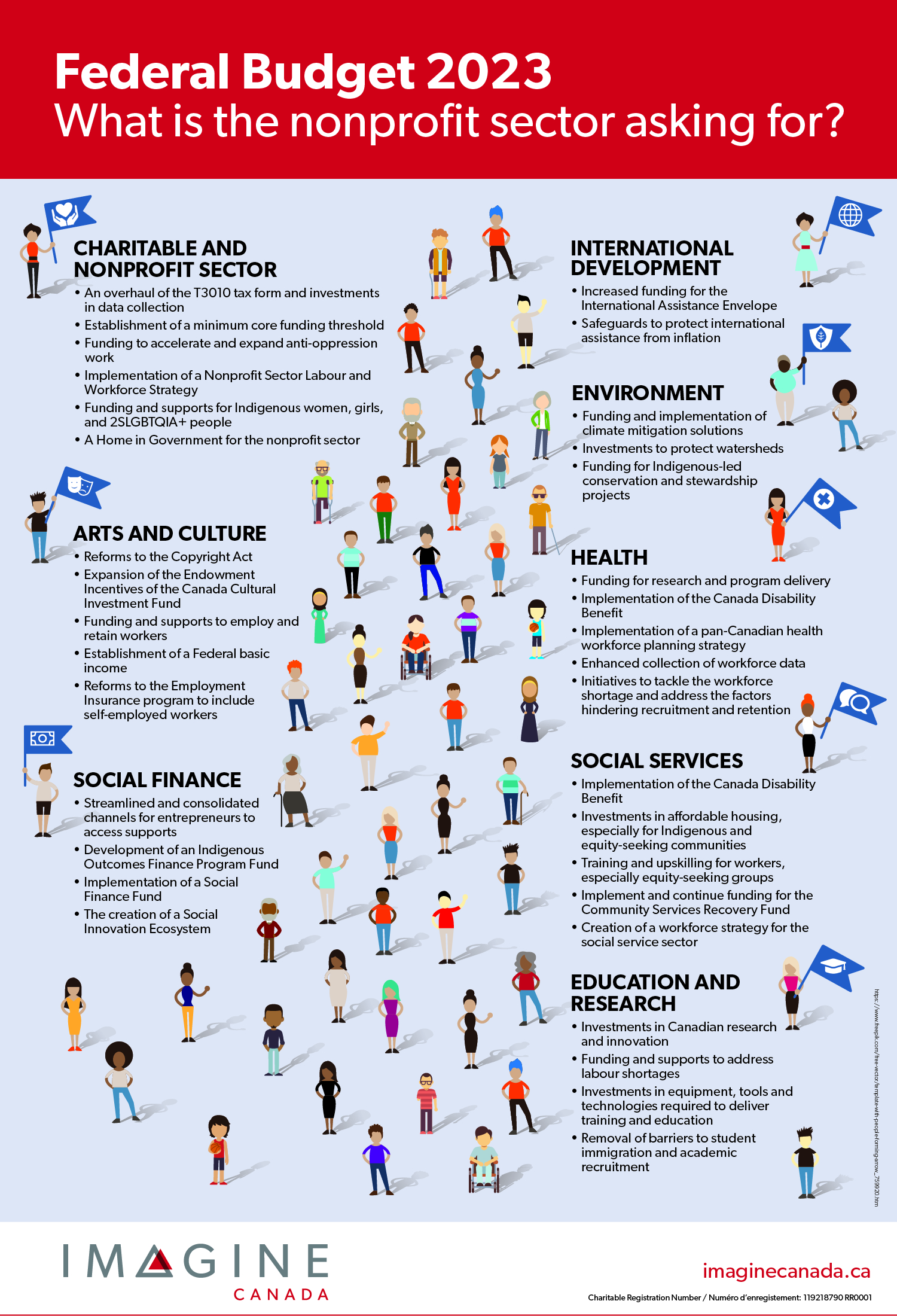Photo credit: Broad Reach Canada
The release of the 2023 Federal Budget is just around the corner. This year organizations had a whopping six months (!) to share their thoughts on the government's federal spending priorities with members of the Standing Committee of Finance.
Number of submissions from charities and nonprofits:
- 2019: ~100
- 2020: ~300
- 2022: ~200
- 2023: ~300
Trends in Sector Priorities
Unlike previous years, the 2023 pre-budget submissions contained several overarching priorities. With citywide lockdowns over and the economy on the cusp of a possible recession, let's take a look at the overarching trends from the 2023 pre-budget submissions.
Core Funding
Across all sub-sectors, organizations asked the government for some form of core funding support. Examples include; baseline funding to support programs for Indigenous peoples, women, girls, and 2SLGBTQIA+ people and investments in mental health programming. Core funding is a crucial tool to help the nonprofit sector weather crises, such as public health emergencies and economic downturns. Core expenses remain a significant challenge for many organizations. These costs are essential to maintaining governance standards, employment, and financial management. Many organizations also cited the need for core funding to continue quality service delivery and ensure decent work for the broader non-profit sector.
Disaggregated Data Collection
Year after year, the sector at large continues to ask for funding and support for data collection and information sharing. This year we saw several sub-sectors ask for improved data collection, including those in the arts and culture, healthcare, and the children and youth-serving sector. This year several organizations also asked for workforce data collection to develop solutions to tackle the healthcare workforce shortage and address factors hindering recruitment and retention.
A Non-Profit Sector Labour and Workforce Strategy
There were several calls for the government to invest in a comprehensive workforce strategy to contribute to staff training, recruitment and retention within the sector. Organizations asked for specific strategies for cultural workers, Early Childhood Educators, Indigenous communities, youth and other equity-seeking groups. It’s clear that the sector wants the government to take more action in the recruitment and retention of talent for the immediate future and the long-term needs of the sector.
Affordability
A significant number of organizations asked the federal government to reform the Employment Insurance Program or to implement an annual basic income in Canada. As the cost of living continues to rise, affordability has become a key issue for Canadians. The charitable and nonprofit sector is no exception. In addition to recommendations for an annual basic income, there were also several asks related to affordability which included access to affordable housing, food programs and pharmaceuticals.
Home in Government
This year, a significant amount of organizations in all sectors asked for a Home in Government for the sector. During the height of the pandemic, several federal relief programs initially excluded the charitable sector. The sector fought hard to be included in those programs and raise awareness of the value of the charitable and non-profit sector and the distinct role it plays in the country's economic and social progress. With more than 170,000 charities and nonprofits across the country and over 2.4 million workers, the charitable sector is a social and economic powerhouse. It’s time the federal government created an entity responsible for ensuring the well-being of the sector.
Continued Investments in Equity, Diversity, and Inclusion Initiatives
Organizations in the sector advocated for continued investment in equity, diversity, and inclusion initiatives for a broad range of equity-seeking groups, including Black and Indigenous communities, youth, women and girls, immigrants and newcomers, people with disabilities, and 2SLGBTQIA+ communities.
While the 2023 budget consultation process has closed, the 2024 budget consultation process is just around the corner. We encourage all organizations in the charitable and nonprofit sector to make a submission to ensure the sector’s voice is heard!
For more information regarding the budget submission process, check out these resources.
Subscribe to Early Alert for updates about government policy activities shaping the nonprofit sector.



